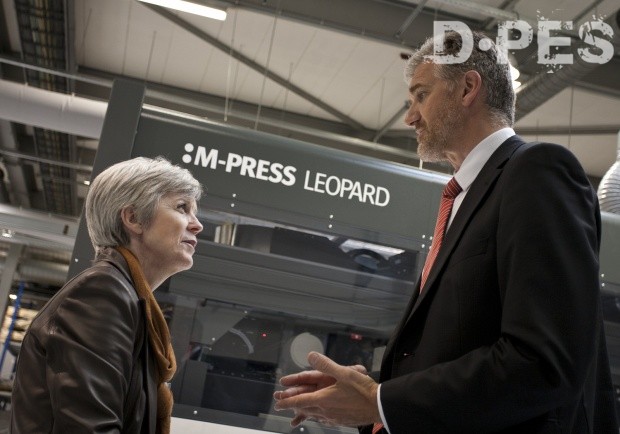2011 review and 2012 preview: seeing more of the same confirms the stability of ink-jet
It's possible that no-one ever believed that 2011 would be a year marked heavily by a lot of new technology introductions. Yes, there have been introductions but, with a few exceptions, this has been a period where continuing maturity has been marked with enhancements and improvements to existing engines, materials and software.
This could have been a difficult year for everyone involved in wide-format digital production but, as it turns out, it hasn't been. We now live in a world where ink-jet technology has matured to become a standard method of producing print and not a process which is to be eyed with scepticism and doubt. In truth, the long life of many of the engines currently in use confirms that expectations have been met quite easily, as has the expected ROI, and users continue to rely on these platforms to earn them their daily bread.
Manufacturers have been pretty sensible in the mainstream. Existing print devices which contain good technological aspects to keep them going haven't been superseded. Instead, there have been several examples of where an existing platform has received a few tweaks or modifications to give it a greater number of benefits. Ink formulations, too, have been privy to refinements in order to meet market demands while software across the board continues to strive to sit more tidily in users' workflows, with greater respect for colour accuracy and consistency.

Pictured with Agfa's Paul Adriaensen, the :M-Press Leopard was one of the new machines I tested this year
Although there has been a sprinkling of new systems on the UV-curable front, other ink technologies have remained pretty static this year. If it ain't broke, don't fix it is a good maxim here and, for the majority of eco-solvent and aqueous-based solutions we have seen little change. New entrants have been keen to lower the investment barrier and add better performance but, in terms of output quality, it is difficult to improve on what's already out there whether printers are being used for displays or for photographic output.
UV-curable machines have received attention with improved ink formulations leading to greater adhesion and better flexibility. This continues their quest to challenge solvent-based platforms for applications where conformability plays an important role. We have also seen spin-offs from existing engines and print-head technologies geared more to specific markets, resulting in faster, narrower and more automated options becoming available for those who want them. Typical examples are Agfa's :M-Press Leopard and HP's Scitex FB7600, both based on earlier models yet refined to fit the specifics needed at the high end of production.
There have been changes, too, with HP's Designjet and Scitex latex printing technologies where goings-on under the bonnet have brought a raft of improvements for end users. Rumours of new engines using rival ink formulations haven't really been fulfilled this year but, with these chemistries very much on the horizon, it is surely only a question of time before aqueous-based resin heat-cured inks will appear in a raft of machines.
Without shadow of doubt to my mind, it is the textile sector which has seen the greatest drive during the past twelve months to become accepted by display producers as a serious production method. A growing number of manufacturers are jumping on this particular bandwagon while those already established are bringing out new options designed to whet the appetite. One notable addition has been the EFI VUTEk TX3250r which joins the 3.2m category with Roland, Mimaki and Mutoh all on the cusp of introducing new engines.
The heavyweight end of textile printing has also been in the frame with familiar names like Durst introducing its Kappa 180 industrial machine. There were other new arrivals, too, from Konica Minolta with its Nassenger Pro 1000, Stork's Sphene and Reggiani's ReNoir joining the upper echelons of digital production.
It is a fact of life that, no matter how good a print engine is, it won't be much use without the right software to drive it. No-one these days is blown away by a new program which claims to handle every output need, and the changes in the past twelve months have been geared more towards versatility and power. There has been growing pressure for slicker colour management and compatibility with JDF workflows, now being addressed more closely by software developers.
During the year I've been lucky enough to put many machines through their paces and their quality and stability are very encouraging. The era for dazzling new ink-jet offerings is now over and this is good news as consolidation and improvements across the board are what this industry needs.